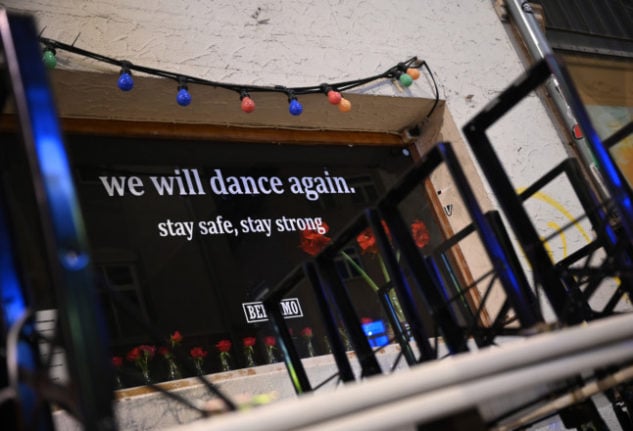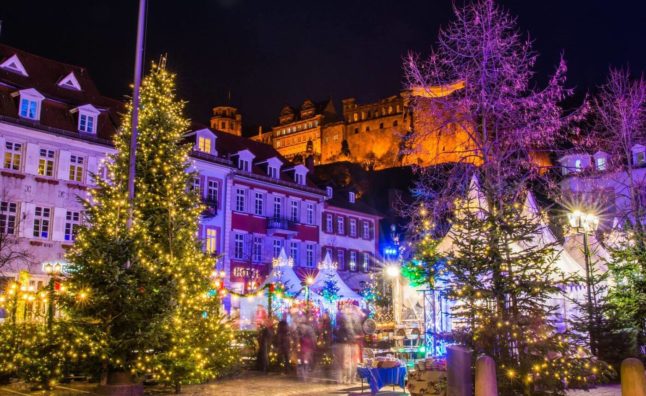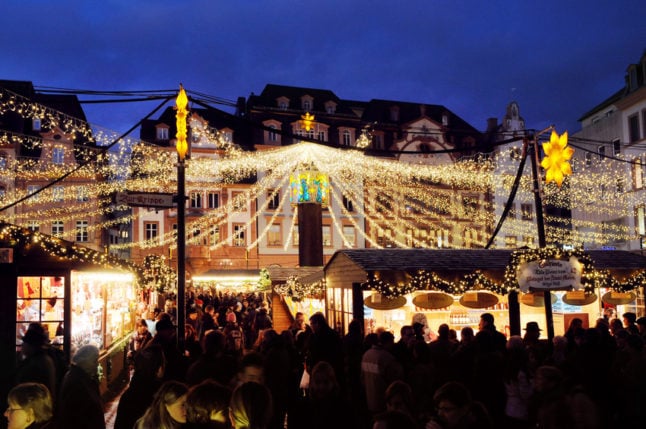The new rules came into force on Friday after the state moved into a lower category on its Covid ‘warning system’.
This system bases restrictions primarily on hospitalisation rates rather than infections. A weekly hospitalisation rate of more than six per 100,000 people triggers Alarm Stage II. If the weekly hospitalisation rate is more than three per 100,000 people, Alarm Stage I is triggered.
Currently, Baden-Württemberg’s hospitalisations stands at 4.93 per 100,000 people, meaning the more relaxed Alarm Stage I is now in place.
This means that, as of Friday, contact restrictions for the vaccinated and recovered have fallen away entirely.
Unvaccinated people will still be restricted to meeting no more than two other people from one additional household, but people with Covid immunity (i.e. vaccinated and recovered people) will no longer be counted in the numbers.
Furthermore, the strict 2G-plus rules have been removed for everything other than large indoor events with more than 1,500 people, or large outdoor events with more than 3,000 people.
This means that vaccinated and recovered people can now visit a restaurant, bar or cafe without a recent test or booster jab.
In the tourist and leisure industries, there will also be significant changes as ski lifts, gondolas and shuttle buses will also move from 2G-plus to 2G. The same applies to leisure and club sports, where the requirement to present a test or have a booster jab to enter indoor spaces will fall away.
READ ALSO: EXPLAINED: The Covid rules for Germany’s ski resorts
For public events with up to 1,500 attendees, a vaccinated and recovered (2G) policy will also be in place, but events can welcome up to 3,000 guests if they opt for a 2G-plus policy.
The changes also make life easier on the unvaccinated by ‘downgrading’ certain sets of businesses from 2G (vaccinated and recovered only) to 3G (vaccinated, recovered or tested). This includes non-essential shops and universities.
In addition, people with no vaccinated or recovered status can use a simple rapid test to go to the hairdressers, rather than a PCR test.
As reported by The Local on Tuesday, the southern state of Bavaria has also relaxed its Covid rules this week. As of Thursday, up to 10,000 people will be allowed at large events like football matches as long as venues stick to 25 percent capacity and enforce a 2G-plus entry policy.
In smaller cultural venues like cinemas, museums and theatres, 2G-plus will remain in place but venues will be able to operate at 50 percent capacity.
Meanwhile, the 2G rule will remain in place in hospitality but will be dropped in non-essential shops following a recent court ruling.
READ ALSO: EXPLAINED: Bavaria to ease some Covid restrictions
Here’s a summary of Baden-Württemberg’s latest changes:
- Contact restrictions: As mentioned above, there is no upper limit on private gatherings of vaccinated and recovered people. Unvaccinated and non-recovered people may still only meet with up to two people from another household. What is new is that vaccinated and recovered people are no longer counted in such a meeting
- The FFP2 mask requirement now also applies in local and long-distance public transport
- The 3G rule applies again in the retail sector. Unvaccinated people can now visit non-essential shops with a negative test
- In areas where a negative PCR test was previously required for 3G, a negative rapid test is now sufficient. Unvaccinated people can now go to the hairdresser with a negative rapid test
- For indoor sports, 2G applies – so only vaccinated and recently recovered people may enter
- For religious services and other religious events, a 3G regulation will be introduced in the “alert levels” from February 14th
- In the catering and hospitality industry, 2G applies indoors and outdoors. In addition, restaurants and bars can return to their previous opening hours as the the current curfew has been dropped
- Trade fairs and exhibitions are not permitted
- Clubs, discos and club-like premises remain closed
- Carnival parades are not permitted in either “alert level”
- For public festivals, the obligation to wear FFP2 masks applies outdoors and visitors levels should be at 50 percent to their previous capacity. If a 2G entry policy applies, a maximum of 3,000 people may attend. If 2G-plus is in place, this is increased to 6,000 visitors
Other states could follow
The decision to relax rules in southern Germany could set a precedent in other states as politicians look for ways to ease the burden of Covid rules on both individuals and industry.
With the milder yet more infectious Omicron dominating in Germany, health experts are eyeing hospitalisation rates to see if restrictions can be relaxed while avoiding excessive strain on the healthcare system.
In Berlin, for example, the 7-day incidence of Covid infections stands at more than 1,800 per 100,000 people – making it one of the country’s Covid hotspots – but the hospitalisation rate is just 3.98.
This compares to a 7-day incidence of 1,024 per 100,000 people in Baden-Württemberg, and a hospitalisation rate of 4.98.
So far, however, there has been no suggestions of easing restrictions in the capital.
Nice graph from @tazgezwitscher showing the decoupling of covid deaths from cases in Germany in recent weeks. (Deaths shifted 12 days later.) pic.twitter.com/61x62melGo
— Tom Nuttall (@tom_nuttall) January 21, 2022
READ ALSO: How worried should we be about Germany’s rocketing Covid rates?





 Please whitelist us to continue reading.
Please whitelist us to continue reading.
Is it just me or is that graph by Tom Nuttall appear to show 100% fatality rate then 125% then omicron.
I look at that graph and see new infections . And they all died 12 days later.
There should be no restrictions. Get rid of the lot.
The decision to focus on hospitalization rates rather than case rates was already agreed last year, yet mysteriously ignored when Omicron came around. Although all of the restrictions are archaic and ridiculous at this point, at least one state is focusing on a far more sensible metric, i.e. hospitalizations.